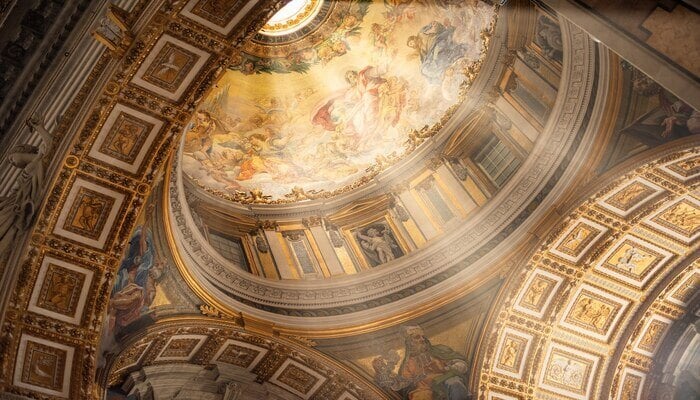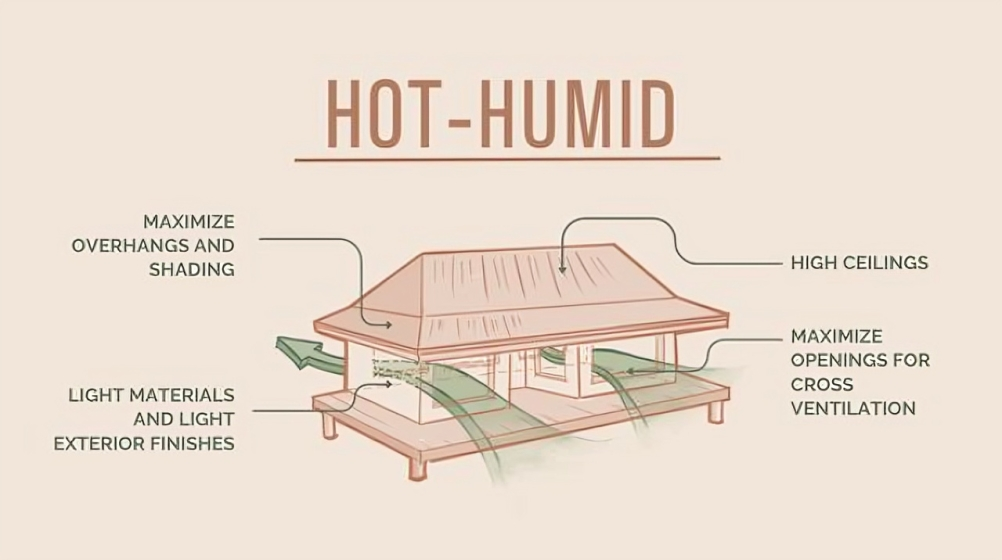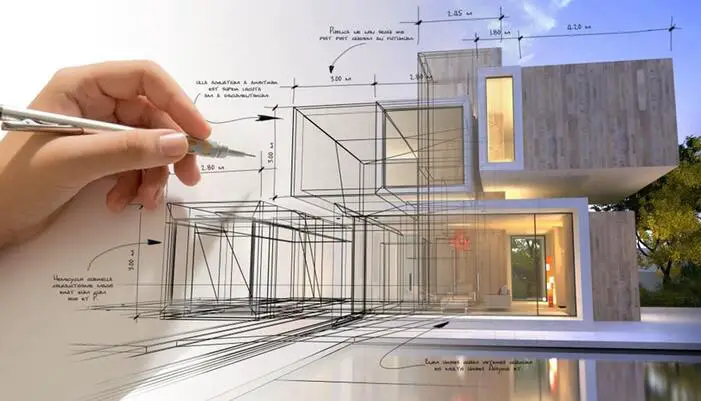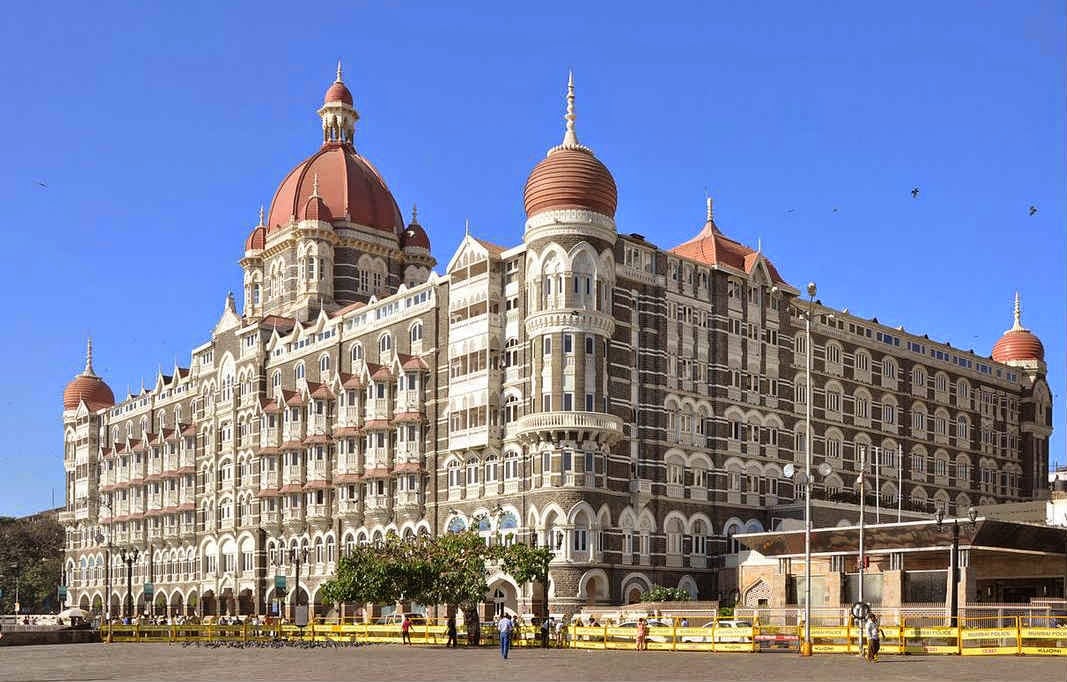Top 25 Renaissance Architecture Examples 2025

Table of Contents
We all have admired and learnt about the era of beautification with intricate ornamentation and elements from historical novellas. This era not only heavily influenced creative minds but also art in architecture but vice versa as well. Yes, we are indeed talking about Renaissance Architecture that emerged in the early 15th century during the humanist movement. Originating in Italy, the movement soon caught the attention and fancy of designers and creators worldwide, getting adapted onto buildings around the world, with excerpts from classical antiquity. But why Italy? One might wonder.
Italy was revered to be a nation of wealth, art and prosperity, with multiple artisans trying to break free into unconventional design visualisation. In the agony of commercialising skills, the Italian artisans brought the era of Revival, the era of unforgettable character that Europe has blessed the world with.
Renaissance Architecture marked Europe’s rebirth of art, science, and geometry. It celebrated balance, symmetry, and humanism through stunning buildings that continue to shape global design. Here are 25 iconic examples that showcase this architectural revolution.
What is Renaissance Architecture?
Prevalent in Europe during the 15th and 16th centuries, Renaissance architecture was a wave of movement that led to the modern era. Dominated by Gothic architecture, the Renaissance movement revolutionised the social and political silhouette. This sort of architecture had a strong emphasis on harmony, proportion, and symmetry. Beginning in Florence, Italy, the style quickly spread across Europe, influencing structures in France, England, Spain, and beyond.
The Renaissance architectural style also laid the foundation for Baroque and Neoclassical architecture, influencing grand structures across Europe and even colonial territories. Its principles of balance and symmetry continue to inspire modern architecture today. Thus making it an essential part of historical architecture.
History of Renaissance Architecture
- 1250-1350: The origin of Renaissance architecture
The era of the Renaissance started as an art movement and developed into the pioneer of perspective drawing, introducing novel design techniques. Giotto di Bondone started experimenting with perspective and implemented techniques during the 1290s.
- 1401/1418: The emergence of Renaissance Architecture
The Gate of Paradise and The Dome of Florence Cathedral are two architectural marvels advocating for the emergence of Renaissance Architecture.
The Gate of Paradise was designed by Lorenzo Ghiberti in the year 1401 and the Dome of Florence Cathedral was designed by Filippo Brunelleschi in the year 1418 and is still considered as one of the largest domes ever constructed.
- 1439-1530 CE: Global Expansion of Renaissance Architecture
There are a few buildings featuring the amalgamation of both the Gothic and Renaissance period, but the Era of Revival came like a revolution from Italy and spread to other nations like Germany, France, and Spain. Every place brought its character to the design style which made them distinct at the same time.
- 1530-1600: The Era of Late Renaissance
The mannerist movement is also referred to as the last stage of Renaissance Architecture which involved using distinct norms in design styles. Emerging by the mid-1500s, designers went on to incorporate a blend of traditional and modern architecture.
- 1630-1800: Baroque Architecture
The early 17th century came with the wave of Baroque Art and Architecture. Carrying forward some elements from the Renaissance era, Baroque gave us some of the greatest wonders to admire.
Characteristics of Renaissance Architecture
Emerging in Italy around the 1400s, the influence of Renaissance architecture was such that it dominated Europe for the following two centuries. Compared to today’s times where trends last days, at max a week’s time, such historical events amassed at this magnanimous a scale, can help better understand and lay the foundation for design processes and enthusiasts of the future. We discuss some features that might be helpful in recognising these celebrated structures.
1. Symmetry
Notable Example: Villa Farnese in Italy.
Symmetry is one of the prime elements in Renaissance architecture. From the building envelope to interior elements, the usage of intricate elements along with the classics from antiquity, the built forms have been distinct yet parallel.
2. Rhythm
Notable Example: Marciana Library in Italy.
Another prominent feature that we can observe in buildings from the Renaissance era is Rhythm. The architectural serenade of a renaissance building is solely defined by the repetitive usage of elements which brings more harmony and acts as a specific design element.
3. The Golden Ratio
Notable Example: Basilica of Santa Maria Novella in Italy.
Establishing an equilibrium in proportions was an integral part of Renaissance Architecture. The concept of the Golden Ratio justifies the well-laid-out proportions within the design and adds a specific character to the structure.
The Concept of the Golden Ratio states that any building form that can be divided into squares and rectangles and when put together lands into the ratio of 1:1.61.
4. Excerpts from the Ancient Greek and Roman styles
Influences from the ancient Greek and Romans were noticeable in many buildings from the era of Renaissance. These included columns, pediments and round arches. Columns in the Ionic, Doric and Corinthian order, capped balustrades from the Greek and Roman classical temple architecture and many more.
Best Renaissance Architecture Examples
The era of Renaissance lasted from the late 13th century to the 17th century, taking excerpts from the classical architecture and traditional outlines around proportion and symmetry. From Italy, Spain and other parts of the world, listed below are some of the finest renaissance architecture examples.
1. St. Peter’s Basilica, Italy
Location: Vatican City
Year: Main development 1506–1626
Architects: Donato Bramante, Carlo Maderno, Raphael, Michelangelo, Gian Lorenzo Bernini, Antonio da Sangallo the Younger, Giacomo della Porta, Domenico Fontana, Giuliano da Sangallo, Baldassare Peruzzi, Carlo Fontana, Giacomo Barozzi da Vignola, Bernardo Rossellino, Pirro Ligorio, and Giovanni Giocondo.
Material used: Travertine stone
Bathed in exquisite artefacts and Baroque architectural style, St. Peter Basilica peaks from the epitome of Renaissance architecture. The church celebrates the era of rejuvenation from every corner and is also prevalent in the dome structure.
Also Read: Why Doesn't Europe Support the Construction of High-Rise Buildings?
2. Church of Santo Spirito, Italy
Location: Florence, Italy
Year: 1487–1482
Architects: Antonio Manetti, Filippo Brunelleschi, Salvi d’ Andrea, Giovanni da Gaiole
Materials Used: Polychrome marbles, plastered walls, and glass windows
Boasting a mathematical composure, Santo Spirito in Florence is one of the most renowned Renaissance tales written by Filippo Brunelleschi! The design features columns dividing the church into three aisles encircling the high altar. The Pilasters on the side walls and coffered ceiling were not originally designed.
3. Poznan Town Hall, Poland
Location: Poznań, Poland
Year: 1550–1560
Architect: Giovanni Battista di Quadro
Material Used: Brick, polychrome, multi-coloured tiles, and expensive fabrics
Draped in the magnificence of Renaissance architecture, the Poznan Town Hall is one of the finest buildings in the revival era. Giovanni Battista elaborated on this one-storey tower to associate it with the design style by incorporating reasonable adornments, a traditional tower, and the attic.
4. Jaen Cathedral, Spain
Location: Jaén, Spain
Year: 1540–1724
Architect: Andres de Vandelvira
Material Used: Marble
The Jaen Cathedral flaunts the Renaissance architecture anthology and remains a memorable paradigm in the books of the Spanish Age of Revival. Located in Santa Maria Square, this church is renowned for its intricacy in spatial conceptualization and traditional stonework.
5. St. Paul’s Cathedral, London
Location: London, England
Year: rebuilt 1675–1710
Architect: Sir Christopher Wren
Materials used: Cool white stone, White-grey Portland Limestone, and others
Transcending with the romance of Italian and Renaissance architecture, St. Paul's Cathedral conveys the tradition of mediaeval cathedrals. A majestic dome reminiscing the Gothic, Neoclassical, and Baroque styles, the cathedral's fabric involves artwork, carvings, plaques, and statues.
6. Basilica of Sant’Andrea, Italy
Location: Mantua, Italy
Year: 1472–1790
Architects: Leon Battista Alberti and Filippo Juvarra
Materials Used: Brickwork, Hardened stucco, and others
Designed by an architect who introduced the Renaissance memoir, the Basilica of Sant' Andrea conforms to the architectural style from the 15th century. The Basilica is fabricated with bricks and stucco paint, adorning a western facade comprehensive of resurgence.
7. Basilica of San Lorenzo, Italy
Location: Florence, Italy
Year: 1421–1470
Architects: Filippo Brunelleschi, Michelozzo, and Michelangelo
Materials used: Marble finishes, gold on ceilings, Bronze pulpits, and others
Quintessential of the early ecclesiastic Renaissance Architecture, the Basilica of San Lorenzo is one of the classical churches in Florence. This classic parish church boasts an integrated layout of columns, entablatures, and arches adorned with Roman figurines. Inside, white walls complement grey columned arcades, and two bronze pulpits stand near the altar.
8. Château de Chambord, France
Location: Chambord, France
Year: 1519–1547
Architect: Domenico da Cortona
Materials Used: Tuffeau ( a soft limestone with a porosity of 45%. This is the main stone used in the construction)
Standing victorious at the epitome of the Renaissance architectural style, the Château de Chambord might take you back to the classical castles with fortifications and moats around the edifice. The layout is an amalgamation of French and Italian styles embracing the interiors and exteriors.
9. Basilica of Santa Maria Novella, Italy
Location: Florence, Italy
Year: Completed in 1470
Architects: Leon Battista Alberti, Filippo Brunelleschi, Giorgio Vasari, Giuliano da Sangallo, Ristoro da Campi, Enrico Romoli, Sisto Fiorentino
Materials Used: Inlaid green marble of Prato (serpentino), white marble facade, and others
The embodiment of the revival era shines through the Basilica of Santa Maria Novella. This Renaissance architecture gem is known for its golden ratio, symmetry, and geometry imbibed in the building envelope. Built with green and white marble, the chapterhouse flaunts the multifaceted art treasury and epitaphial.
10. The Queen’s House, London
Location: Greenwich, London
Year: 1616–1635
Architect: Inigo Jones
Materials used: Ironwork of Tulip stairs, original painted woodwork of the Great Hall, marble floor
One of the pioneers in the era of Renaissance architecture, the Queen’s House in Greenwich is a traditional quote from classical architecture. The symmetry and the harmoniously contrived details makes it distinct along with intricate marble flowing and painted ceilings.
Also Read: 10 Famous Female Architects Leading the Way in the AEC Industry in the Modern Day
11. Villa Farnese, Italy
Location: Caprarola, Italy
Year: 1559–1575
Architects: Giacomo Barozzi da Vignola, Antonio da Sangallo the Younger, and Baldassare Peruzzi
Materials Used: Fresco Stone
This pentagonal mansion is constructed with Reddish Gold Stone and supported by buttresses. The centrepiece of Vast Farnese represents power and embodies the Renaissance architecture era. The galleried court features niches with busts of Roman Emperors, flanked by paired Ionic columns.
12. Augsburg Town Hall, Germany
Location: Augsburg, Germany
Year: 1615–1624
Architect: Elias Holl
Materials Used: Stonework
Mapped as one of the most important secular buildings in the Alps, constructed incorporating the features of renaissance, Augsburg Town Hall is the historical silhouette tied to religious sentiments. Emerging from historical and cultural importance, this building was conserved by the "Hague Convention for the Protection of Cultural Property in the Event of Armed Conflict".
13. Tempietto of San Pietro, Italy
Location: Rome, Italy
Year: 1502
Architect: Donato Bramante
Materials Used: Stone Masonry
Touching newer skylines in High Italian Renaissance Architecture, San Pietro is a small church with a narrow courtyard. Featuring harmony and symmetry in the design along with an elaborative dome, Tempietto stands as a classic example from the revival era.
14. Basilica Palladiana, Italy
Location: Vicenza, Italy
Year: 1549–1614
Architect: Andrea Palladio
Materials used: Verona Marble
Buckled to the traditional features of Renaissance Architecture, the loggia in the building fabric justifies the harmony. An array of structural elements can be seen with round arches opening to bays. This marble-made serenity has beautiful statues adorning the parapet level.
15. Sagrestia Vecchia, Italy
Location: Florence, Italy
Year: 1421–1440
Architect: Filippo Brunelleschi
Materials Used: Pietra Serena (type of grey sandstone), Off-white or cream plaster, White panels adorned with gilded rosette, and Fresco artwork.
Emerged as one of the Renaissance architecture miracles, Sagrestia Vecchia or Old Sacristy has been standing with pride in the books of the revival era in Florence. Designed by Filippo Brunelleschi, this monument recites a harmonious serenade with its system of pilasters and arches.
16. Palazzo Rucellai, Italy
Location: Florence, Italy
Year: 1446–1451
Architects: Leon Battista Alberti and Bernardo Rossellino
Materials Used: Stone Veneer, Smooth-faced pilasters
Marrying the classic fabric and design excerpts from the Renaissance period architecture, Palazzo Rucellai is a 15th century townhouse in Italy. The building flaunts a magnificent grid-like facade embodying a humanistic and rational aesthetic.
17. Cathedral of the Archangel, Russia
Location: Moscow, Russia
Year: 1505–1508
Architect: Aloisio the New
Materials Used: Timber
Emerging from the lanes of Russian church-style architecture style, the Archangel Cathedral was built in the mediaeval era. Amalgamating influences from Russian and Italian design styles from the revival era, the structure exhibits semi-circular niches, arched gateways, shell-shaped ornamentation and floral paraphernalia on the envelope.
18. Bremen City Hall, Germany
Location: Bremen, Germany
Year: 1405–1410 (Renaissance facade added 1608–1612)
Architect: Johann Poppe
Materials Used: Stone
Functioning as the assembly of the Free Hanseatic City of Bremen, the Bremen City Hall epitomises brick Gothic architecture in Europe. The town hall and the archbishop's palace have been bridged by a gable that faces the cathedral from the era of Renaissance art and architecture.
Also Read: The Connection Between Art And Architecture: The Beauty of Synergy
19. Gripsholm Castle, Sweden
Location: Mariefred, Sweden
Year: 1537–1545
Architect: Henrik von Cöllen
Materials Used: Brickwork
Pinned as a royal residence until the 18th century, the Gripsholm Castle in Mariefred was constructed in the 1370s and later converted to a Carthusian Abbey in 1498. Standing as a distinct example of Renaissance Architecture, the structure currently functions as a museum.
20. Florence Cathedral, Italy
Location: Florence, Italy
Year: Dome completed 1436
Architects: Filippo Brunelleschi, Francesco Talenti, Arnolfo di Cambio, and Emilio De Fabris
Materials Used: Marble, Brick
Embodying harmony and unconventional technology, this dome from the period of the Renaissance architecture is the largest in the world. Implementing Gothic architecture, this dome touches skylines with its double-shell structure with masonry and the incorporation of arches and cloistered vaults.
21. Marciana Library (Library of Saint Mark), Italy
Location: Venice, Italy
Year: 1537–1588
Architects: Jacopo Sansovino and Vincenzo Scamozzi
Materials Used: Istria Stone (microcrystalline limestone)
The metaphor for classical knowledge and centre of learning can be mapped in the urban text of Italy. The structure flaunts its harmony and excerpts from the classic temple architecture via decorative columns of Roman piazzas along with antique figurines. Reminiscent of the then-popular Palladian architecture, this still stands as a masterpiece.
22. Pitti Palace, Italy
Location: Florence, Italy
Year: 1458–1560
Architects: Luca Fancelli, Giorgio Vasari, Bartolomeo, Ammannati, Giulio Parigi, Giuseppe Ruggeri, Alfonso Parigi
Materials Used: Pietraforte (Fine grained sandstone with carbonate cement)
Located on the south side of the Arno River, Pitti Palace serves as one of the largest palaces from the period of Renaissance art and architecture that now functions as an art gallery. The structure is reminiscent of the Florentine romance of the evolved all'antica with its intricate array of seven-headed vents.
23. Schwerin Castle, Germany
Location: Schwerin, Germany
Year: 1845–1857
Architects: Georg Adolph Demmler, Gottfried Semper, Friedrich August Stüler, Ernst Friedrich Zwirner
Materials Used: Schwerin’s terracotta
Constructed on an island in Lake Schwerin, the magnificence of this castle underlines the era of Renaissance architecture, like no other. Currently functioning as the state building, one can pin influences from the 19th Century that features arcades, terraces, a grotto, and steps.
24. Heidelberg Palace, Germany
Location: Heidelberg, Germany
Year: 1556–1622
Architect: Andrea Palladio
Materials Used: Neckar Red Sandstone
The Heidelberg Palace is one of the prime examples of the Renaissance architectural style. The planners kept the building congruent with the urban context and went back to traditional Gothic layouts. However, the castle continues to shine through wars and destruction, keeping memorabilia as remains.
25. Johannisburg Palace, Germany
Location: Aschaffenburg, Germany
Year: 1605–1614
Architect: Georg Ridinger
Materials Used: Red Sandstone
Pinned as one of the most talked-about buildings draped in the Renaissance architectural style in Germany, Johannisburg Palace was built between 1605 and 1614. Designed as the second residence of Johann Schweikhard and Mainz Archbishop, this castle features almost 150 relief figures and thirty one alabaster sculptures.
Also Read: 20 Famous Architects Who Transformed Architecture
Renaissance vs. Gothic Architecture
|
Feature |
Renaissance Architecture |
Gothic Architecture |
|
Proportion and Light |
Balanced, human-scale proportions that use light to reveal geometric order. |
Vertical emphasis and dramatic light through stained glass; height and transcendence. |
|
Mathematical vs. Vertical Emphasis |
Based on geometry, modular proportions, and classical ratios. |
Aimed at vertical uplift and spiritual aspiration. |
|
Structural System |
Rounded arches, domes, classical columns, and clear load-bearing logic. |
Pointed arches, ribbed vaults, and flying buttresses permit tall walls. |
|
Design Philosophy |
Humanism, clarity, rationalism, and reference to antiquity. |
Mystery, upward movement, and ornament that directs the eye heavenward. |
|
Materials and Decoration |
Marble, fresco, and restrained classical ornamentation integrated with structure. |
Heavily carved stonework, stained glass narrative, and sculptural facades. |
The shift from Gothic to Renaissance architecture reflects a broader change in how architects thought about space, proportion, and purpose. Gothic buildings emphasised height, vertical drama, and richly sculpted surfaces.
Renaissance architects returned to classical models, favouring measured proportions, symmetry, and clarity of form. Understanding both helps explain why buildings from each tradition feel and function differently in their civic and religious settings.
Summing It Up
The wave of Renaissance art and architecture hit the world like no other. Right from influencing antiquities to bringing in unconventional building narratives, this architectural style is still relevant and influences many modern designs as per their urban context.The Era of Revival is definitely a ride to remember, embrace and implement!
Renaissance Architecture symbolised harmony between science and art, redefining design through geometry, light, and proportion. The legacy of these 25 structures continues to inspire architects today, blending innovation with timeless classical principles.
If you want to learn how to combine creative design with technical tools, consider upskilling with the Master Computational Design Course offered by Novatr to build the skills that translate classical thinking into modern practice.
FAQs
1. What is the best example of Renaissance architecture?
St. Peter's Basilica in Vatican City is one of the best examples of Renaissance architecture. Designed by master architects including Bramante, Michelangelo, and Bernini, the basilica showcases the grandeur and symmetry of the Renaissance style.
2. Who were the main architects of the Renaissance?
While Filippo Brunelleschi, often considered the father of Renaissance architecture, is best known for designing the dome of Florence Cathedral, Leon Battista Alberti contributed significantly with his works like the façade of Santa Maria Novella. Moreover, Michelangelo redefined Renaissance architecture by designing the majestic Dome of the St. Peter's Basilica
3. What is an example of Renaissance architecture in India?
Chhatrapati Shivaji Terminus is an iconic example of Victorian Renaissance architecture in India. Designed by Frederick William Stevens, it features grand arches, ribbed vaults, and an impressive central dome, reflecting the symmetry and classical proportions characteristic of the Renaissance.

 Thanks for connecting!
Thanks for connecting!


.png)
-1.png)






